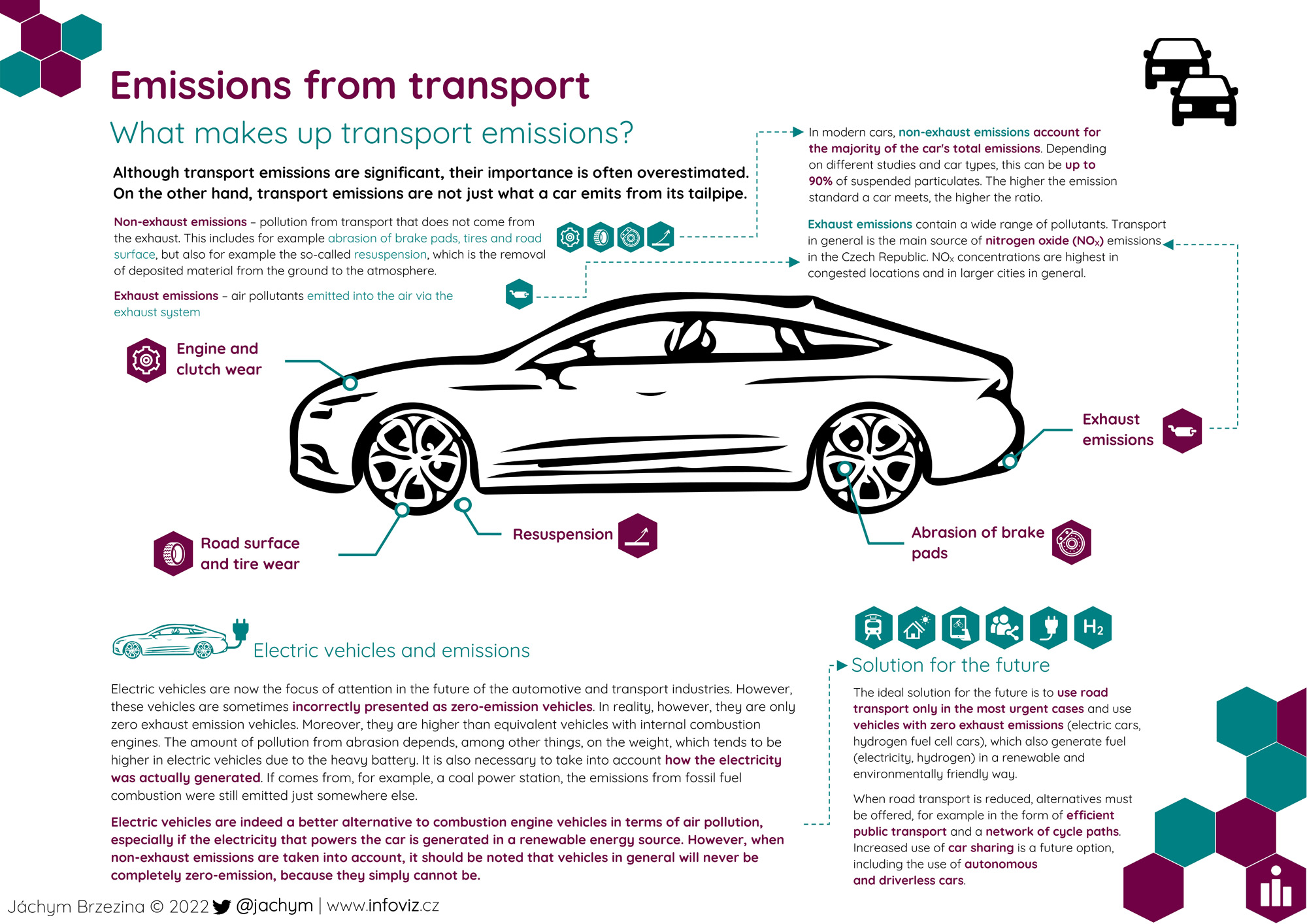
infoviz.cz
Although transport emissions are significant, their importance is often overestimated. On the other hand, transport emissions are not just what a car emits from its tailpipe.
Non-exhaust emissions – pollution from transport that does not come from the exhaust. This includes for example abrasion of brake pads, tires and road surface, but also for example the so-called resuspension, which is the removal of deposited material from the ground to the atmosphere.
Exhaust emmissions – air pollutants emitted into the air via the exhaust system
In modern cars, non-exhaust emissions account for the majority of the car's total emissions. Depending on different studies and car types, this can be up to 90% of suspended particulates. The higher the emission standard a car meets, the higher the ratio.
Exhaust emissions contain a wide range of pollutants. Transport in general is the main source of nitrogen oxide (NOX) emissions in the Czech Republic. NOX concentrations are highest in congested locations and in larger cities in general.
Electric vehicles are now the focus of attention in the future of the automotive and transport industries. However, these vehicles are sometimes incorrectly presented as zero-emission vehicles. In reality, however, they are only zero exhaust emission vehicles. Moreover, they are higher than equivalent vehicles with internal combustion engines. The amount of pollution from abrasion depends, among other things, on the weight, which tends to be higher in electric vehicles due to the heavy battery. It is also necessary to take into account how the electricity was actually generated. If comes from, for example, a coal power station, the emissions from fossil fuel combustion were still emitted just somewhere else.
Electric vehicles are indeed a better alternative to combustion engine vehicles in terms of air pollution, especially if the electricity that powers the car is generated in a renewable energy source. However, when non-exhaust emissions are taken into account, it should be noted that vehicles in general will never be completely zero-emission, because they simply cannot be.
The ideal solution for the future is to use road transport only in the most urgent cases and use vehicles with zero exhaust emissions (electric cars, hydrogen fuel cell cars), which also generate fuel (electricity, hydrogen) in a renewable and environmentally friendly way.
When road transport is reduced, alternatives must be offered, for example in the form of efficient public transport and a network of cycle paths. Increased use of car sharing is a future option, including the use of autonomous and driverless cars.